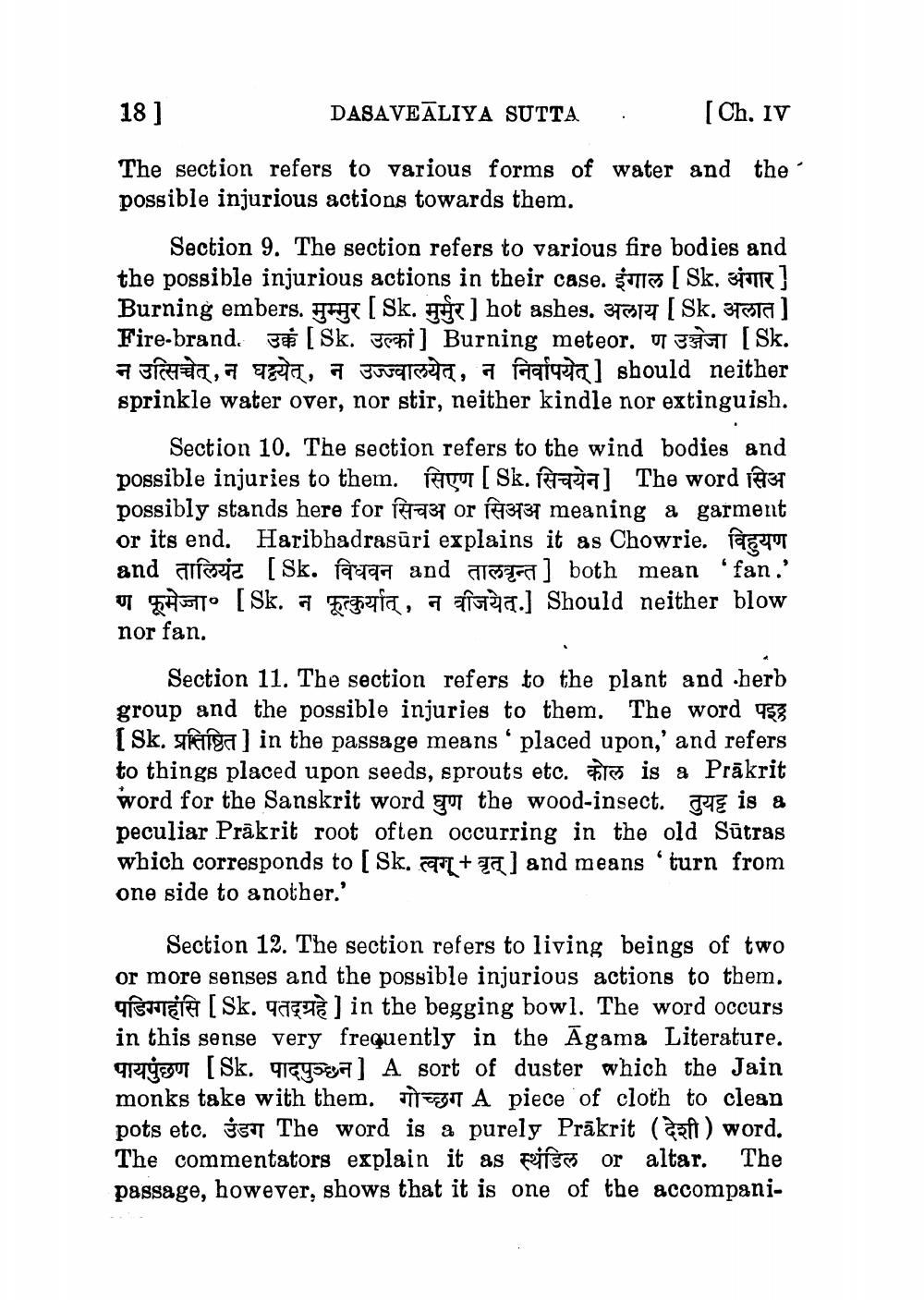________________
18 ]
DASAVEĀLIYA SUTTA
.
(Ch. IV
The section refers to various forms of water and the possible injurious actions towards them.
Section 9. The section refers to various fire bodies and the possible injurious actions in their case. इंगाल [ Sk. अंगार] Burning embers. मुम्मुर [ Sk. मुर्मुर] hot ashes. अलाय [Sk. अलात ] Fire-brand. J [Sk. Seti] Burning meteor. O 33151 [Sk. a Bicha, a oza, a Joveleta, a Faqiqal should neither sprinkle water over, nor stir, neither kindle nor extinguish.
Section 10. The section refers to the wind bodies and possible injuries to them. सिएण [ Sk. सिचयेन] The word सिअ possibly stands here for सिचअ or सिअअ meaning a garment or its end. Haribhadrasūri explains it as Chowrie. Peter and तालियंट [Sk. विधवन and तालवृन्त] both mean fan.' 05751[Sk. a forgogía, 7 aita.] Should neither blow nor fan.
Section 11. The section refers to the plant and herb group and the possible injuries to them. The word 958 [Sk. liga) in the passage means placed upon,' and refers to things placed upon seeds, sprouts etc. fra is a Prākrit word for the Sanskrit word gu the wood-insect. He is & peculiar Prakrit root often occurring in the old Sūtras which corresponds to [ Sk. carl + ) and means 'turn from one side to another.'
Section 12. The section refers to living beings of two or more senses and the possible injurious actions to them. पडिग्गहसि [Sk. पतद्ग्रहे ] in the begging bowl. The word occurs in this sense very frequently in the Agama Literature. पायपुंछण [Sk. पादपुञ्छन] A sort of duster which the Jain monks take with them. That A piece of cloth to clean pots etc. SST The word is a purely Prākrit (at) word. The commentators explain it as FILE or altar. The passage, however, shows that it is one of the accompani




